Conditioned medium from primary cytotrophoblasts, primary placenta-derived mesenchymal stem cells, or sub-cultured placental tissue promoted HUVEC angiogenesis in vitro
- PMID: 33596987
- PMCID: PMC7890636
- DOI: 10.1186/s13287-021-02192-1
Conditioned medium from primary cytotrophoblasts, primary placenta-derived mesenchymal stem cells, or sub-cultured placental tissue promoted HUVEC angiogenesis in vitro
Abstract
Background: As a large capillary network, the human placenta plays an important role throughout pregnancy. Placental vascular development is complex and delicate and involves many types of placental cells, such as trophoblasts, and mesenchymal stem cells. There has been no systematic, comparative study on the roles of these two groups of placental cells and the whole placental tissue in the placental angiogenesis. In this study, primary cytotrophoblasts (CTBs) from early pregnancy and primary human placenta-derived mesenchymal stem cells (hPDMSCs) from different stages of pregnancy were selected as the cell research objects, and full-term placental tissue was selected as the tissue research object to detect the effects of their conditioned medium (CM) on human umbilical vein endothelial cell (HUVEC) angiogenesis.
Methods: We successfully isolated primary hPDMSCs and CTBs, collected CM from these placental cells and sub-cultured placental tissue, and then evaluated the effects of the CM on a series of angiogenic processes in HUVECs in vitro. Furthermore, we measured the levels of angiogenic factors in the CM of placental cells or tissue by an angiogenesis antibody array.
Results: The results showed that not only placental cells but also sub-cultured placental tissue, to some extent, promoted HUVEC angiogenesis in vitro by promoting proliferation, adhesion, migration, invasion, and tube formation. We also found that primary placental cells in early pregnancy, whether CTBs or hPDMSCs, played more significant roles than those in full-term pregnancy. Placental cell-derived CM collected at 24 h or 48 h had the best effect, and sub-cultured placental tissue-derived CM collected at 7 days had the best effect among all the different time points. The semiquantitative angiogenesis antibody array showed that 18 of the 43 angiogenic factors had obvious spots in placental cell-derived CM or sub-cultured placental tissue-derived CM, and the levels of 5 factors (including CXCL-5, GRO, IL-6, IL-8, and MCP-1) were the highest in sub-cultured placental tissue-derived CM.
Conclusions: CM obtained from placental cells (primary CTBs or hPDMSCs) or sub-cultured placental tissue contained proangiogenic factors and promoted HUVEC angiogenesis in vitro. Therefore, our research is helpful to better understand placental angiogenesis regulation and provides theoretical support for the clinical application of placental components, especially sub-cultured placental tissue-derived CM, in vascular tissue engineering and clinical treatments.
Keywords: Angiogenesis; Conditioned medium; HUVECs; Placental tissue; Primary cytotrophoblasts; Primary human placenta-derived mesenchymal stem cells.
Conflict of interest statement
The authors declare no competing interests.
Figures


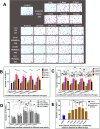
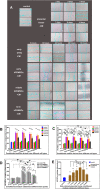
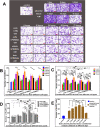
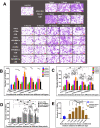
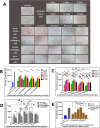

Similar articles
-
Conditioned medium derived from FGF-2-modified GMSCs enhances migration and angiogenesis of human umbilical vein endothelial cells.Stem Cell Res Ther. 2020 Feb 18;11(1):68. doi: 10.1186/s13287-020-1584-3. Stem Cell Res Ther. 2020. PMID: 32070425 Free PMC article.
-
Exosomes of human placenta-derived mesenchymal stem cells stimulate angiogenesis.Stem Cell Res Ther. 2017 Oct 3;8(1):219. doi: 10.1186/s13287-017-0660-9. Stem Cell Res Ther. 2017. PMID: 28974256 Free PMC article.
-
Human placental multipotent mesenchymal stromal cells modulate placenta angiogenesis through Slit2-Robo signaling.Cell Adh Migr. 2016 Mar 3;10(1-2):66-76. doi: 10.1080/19336918.2015.1108510. Epub 2016 Jan 8. Cell Adh Migr. 2016. PMID: 26745454 Free PMC article.
-
Placental mesenchymal stromal cells as an alternative tool for therapeutic angiogenesis.Cell Mol Life Sci. 2020 Jan;77(2):253-265. doi: 10.1007/s00018-019-03268-1. Epub 2019 Aug 29. Cell Mol Life Sci. 2020. PMID: 31468060 Free PMC article. Review.
-
Regulation of placental angiogenesis.Microcirculation. 2014 Jan;21(1):15-25. doi: 10.1111/micc.12093. Microcirculation. 2014. PMID: 23981199 Free PMC article. Review.
Cited by
-
Successful fat-only whole breast reconstruction using cultured mature adipocytes and conditioned medium containing MCP-1.Sci Rep. 2023 Nov 3;13(1):18998. doi: 10.1038/s41598-023-45169-1. Sci Rep. 2023. PMID: 37923755 Free PMC article.
-
Application of adult stem cells in obstetrics and gynecology: A scoping review.Eur J Obstet Gynecol Reprod Biol X. 2025 Jan 22;25:100367. doi: 10.1016/j.eurox.2025.100367. eCollection 2025 Mar. Eur J Obstet Gynecol Reprod Biol X. 2025. PMID: 39967607 Free PMC article. Review.
-
Hypoxia-Mimetic CoCl2 Agent Enhances Pro-Angiogenic Activities in Ovine Amniotic Epithelial Cells-Derived Conditioned Medium.Cells. 2022 Jan 28;11(3):461. doi: 10.3390/cells11030461. Cells. 2022. PMID: 35159271 Free PMC article.
-
Anoikis in cell fate, physiopathology, and therapeutic interventions.MedComm (2020). 2024 Sep 15;5(10):e718. doi: 10.1002/mco2.718. eCollection 2024 Oct. MedComm (2020). 2024. PMID: 39286778 Free PMC article. Review.
-
Significance of Placental Mesenchymal Stem Cell in Placenta Development and Implications for Preeclampsia.Front Pharmacol. 2022 Jun 1;13:896531. doi: 10.3389/fphar.2022.896531. eCollection 2022. Front Pharmacol. 2022. PMID: 35721156 Free PMC article. Review.
References
-
- Wang Y, Zhao S. Vascular biology of the placenta. San Rafael: Morgan & Claypool Life Sciences; 2010. - PubMed
Publication types
MeSH terms
Substances
LinkOut - more resources
Full Text Sources
Other Literature Sources
Research Materials
Miscellaneous

